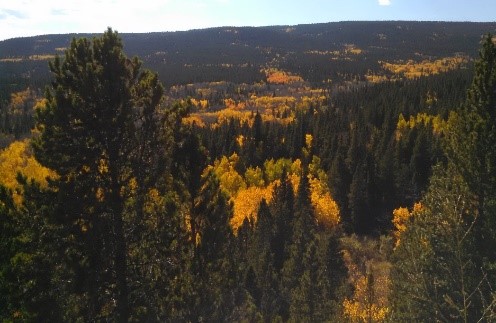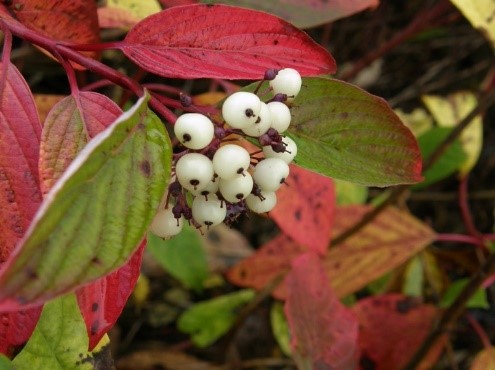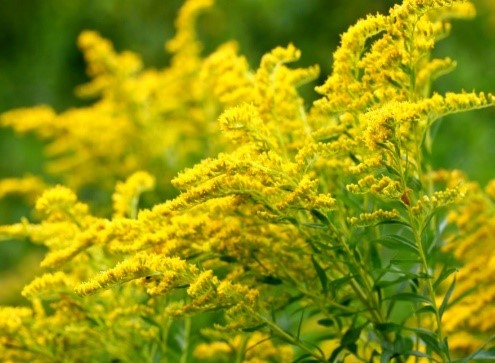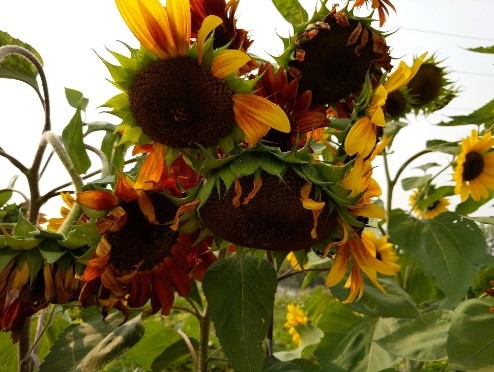A Colorado Autumn
- 2020-09-05
- By mkirk
- Posted in The Garden Buzz
By Betsy Dickson, Colorado Master Gardener
“Every leaf speaks bliss to me fluttering from the autumn tree.”
Emily Bronte
In this beautiful state, the colors of autumn are found in the forest, on a mountainside, in a meadow, on the edge of a valley and tucked below a cliff. The Colorado variety of topography gives us dramatic ways to celebrate autumn. Those who truly love the state, love the outdoors.

While Aspen trees (Populus tremuloides) are associated with the entire state of Colorado, they do their best in elevations of 5,500 to 12,000 feet. In an urban setting Aspen prefer native mountain soils that are acidic and drain well. The average life expectancy in a home setting is up to 25 years, yet Aspen may be prone to several diseases.
In the home garden, in lieu of Aspen, consider a smaller tree with beautiful autumn color. The Serviceberry (Amelanchier spp.) is a member of the rose family and can be grown as a tall shrub or small tree. Serviceberry leaves turn shades of red, yellow, or orange. It is hardy in cold climates and will tolerate drought and alkaline soils, making it perfect for Colorado’s Front Range landscapes.
Autumn garden time focuses on layers being pulled back and the soft colors and textures of this season being enhanced. Grasses, flowering plants, and ornamental vegetables are ideal with cooler autumn nights. Consider two autumn favorites. Purple Fountain Grass (Pennisetum setaceum ‘Rubrum’) is an annual which offers special texture and color. The drama of this grass can be appreciated when planted around mound-forming fall-blooming plants like mums. Flowering Kale (Brassica oleracea) will hold up to frosty temperatures and will add an interesting accent to autumn and winter gardens. Flowering Kale is grown for appearance, not taste.

Several shrubs that are strong backdrops in the spring and summer landscape step forward in autumn months with colorful strength. Consider the Dogwood (Red Osier). Not only do the leaves turn shades of red and orange, but after they drop, the stems remain shiny, brick red throughout the winter. Golden Currant (Ribes aureum) is an attractive native shrub well-suited to the soils and climate in our Front Range landscapes. The fine display of red-orange autumn color concludes three seasons of landscape interest.

Another autumn gem is Goldenrod (Solidago spp.) with its rich golden plumes. Honey bees love this plant on a warm autumn afternoon. The cultivars of Goldenrod vary in size, but the plant thrives in full sunlight and moist soil. Contrary to popular belief, Goldenrod does not contribute to hay fever or allergies.

Sunflowers (Helianthus) are familiar, appealing flowers. They grow strongly throughout two seasons: summer and autumn. In a warm spring they begin to show the life that they will bring to a garden. The flower turns and faces the sun during the day, tracking the sun’s movement.
Focus on warm days, cool nights, and plenty of sunshine for a recipe of colorful, fabulous autumn landscapes in Colorado.
“No spring nor summer beauty hath such grace as I have seen in one autumnal face.”
John Donne
Horticulture Resources
- Garden Buzz Archives
- CSU Extension Resources
- Colorado Master Gardener Program
- Foothills to Plains Native Plant Master Program
- Native Bee Watch Community Science Program
- The Co-Hort Blog
- PlantTalk Colorado
- Soil Testing
- Plant Select
- Emerald Ash Borer
- Japanese Beetle
- Colorado State Forest Service
- Ask an Expert


